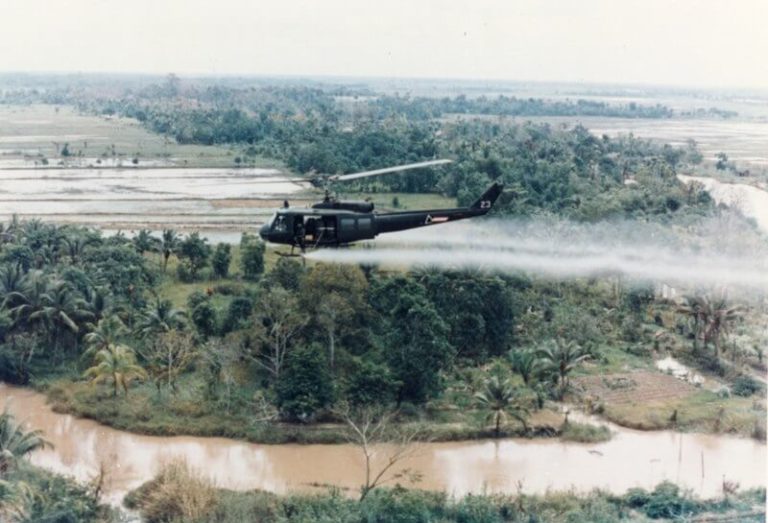Agent Orange Benefits for Porphyria Cutanea Tarda

CCK Law: Our Vital Role in Veterans Law
Porphyria Cutanea Tarda
Porphyria Cutanea Tarda is a disorder characterized by the thinning and blistering of the skin in sun-exposed areas. Symptoms of this skin condition include the following:
- Blisters on areas of the skin exposed to the sun such as the face, arms, and hands followed by crusting and scarring
- Rashes
- Hyperpigmentation
- Increased hair growth on areas exposed to the sun
- Liver damage
- Abdominal pain or cramping
- Problems with the nervous system or muscles (e.g. seizures, nerve damage)
Individuals with porphyria cutanea tarda may experience pain, sensations of heat, blistering, and skin redness and swelling from being out in the sun. Blisters tend to heal slowly, and are often accompanied by scarring, which may be disfiguring. Although the symptoms come and go, porphyria cutanea tarda is a life-long disease.
In order to diagnose this condition, doctors will perform a physical examination and most likely conduct blood and urine tests. Treatment for this condition involves pain medication, sedatives to calm the body and reduce anxiety, and beta-carotene supplements to help with photosensitivity.
Is Porphyria Cutanea Tarda a Presumptive Condition?
VA presumes porphyria cutanea tarda is related to a veteran’s exposure to Agent Orange or other herbicides during military service. Like chloracne, presumptive service connection is awarded for porphyria cutanea tarda when it appears within one year of exposure to Agent Orange to a degree of at least 10 percent disabling by VA’s rating regulations. VA evaluates this condition under the General Rating Formula for the Skin:
- “60% – At least one of the following: characteristic lesions involving more than 40 percent of the entire body or more than 40 percent of exposed areas affected; constant or near-constant systemic therapy including, but not limited to, corticosteroids, phototherapy, retinoids, biologics, photochemotherapy, psoralen with long-wave ultraviolet-A light (PUVA), or other immunosuppressive drugs required over the past 12-month period
- 30% – At least one of the following: characteristic lesions involving 20 to 40 percent of the entire body or 20 to 40 percent of exposed areas affects; or systemic therapy including, but not limited to, corticosteroids, phototherapy, retinoids, biologics, photochemotherapy, PUVA) or other immunosuppressive drugs required for a total duration of 6 weeks or more, but not constantly, over the past 12-month period
- 10% – At least one of the following: characteristic lesions involving at least 5 percent, but less than 20 percent, of the entire body affected; or at least 5 percent, but less than 20 percent of exposed areas affected; or intermittent systemic therapy including, but not limited to, corticosteroids, phototherapy, retinoids, biologics, photochemotherapy, PUVA, or other immunosuppressive drugs required for a total duration of less than 6 weeks over the past 12-month period
- 0% – No more than topically required therapy required over the past 12-month period and at least one of the following characteristic lesions involving less than 5 percent of the entire body affected; or characteristic lesions involving less than 5 percent of exposed areas affected.”
Importantly, complications of porphyria cutanea tarda should be rated separately under the appropriate diagnostic codes.
Changes in the Association Between Porphyria Cutanea Tarda and Agent Orange Exposure Over Time
To describe the different strengths of association between a certain disease and exposure to herbicides, the Institute of Medicine, developed five categories. The following categories are listed from strongest association to weakest association in decreasing order:
- Sufficient Evidence of a Causal Relationship
- Sufficient Evidence of an Association
- Limited/Suggestive Evidence of an Association
- Inadequate/Insufficient Evidence to Determine Whether an Association Exists
- Limited/Suggestive Evidence of No Association
In its 1994 report on “Veterans and Agent Orange: Health Effects of Herbicides Used in Vietnam”, the IOM concluded that there was sufficient evidence of an association between exposure to herbicides used in Vietnam and porphyria cutanea tarda. However, in 1996, IOM reviewed new research regarding the condition and Agent Orange exposure and determined that there is only limited or suggestive evidence of an association. Nevertheless, the revised conclusion did not change VA’s decision to include porphyria cutanea tarda on the list of presumptive conditions related to Agent Orange exposure.
About the Author
Share this Post
